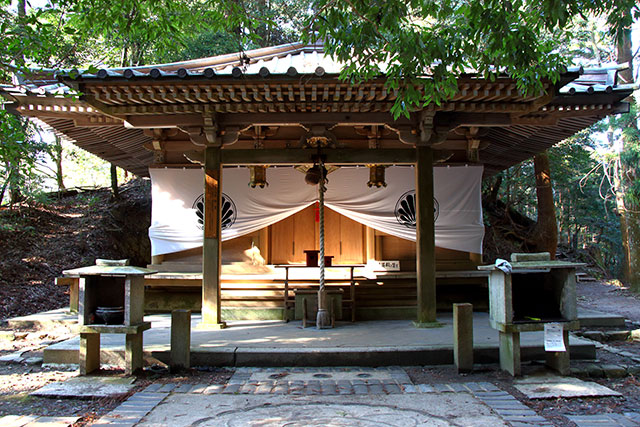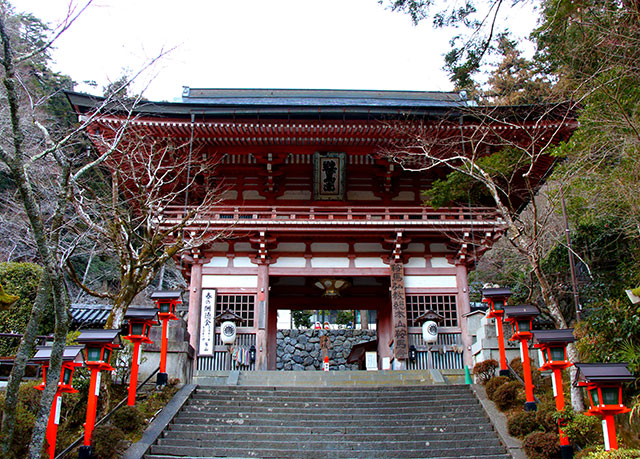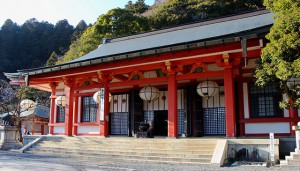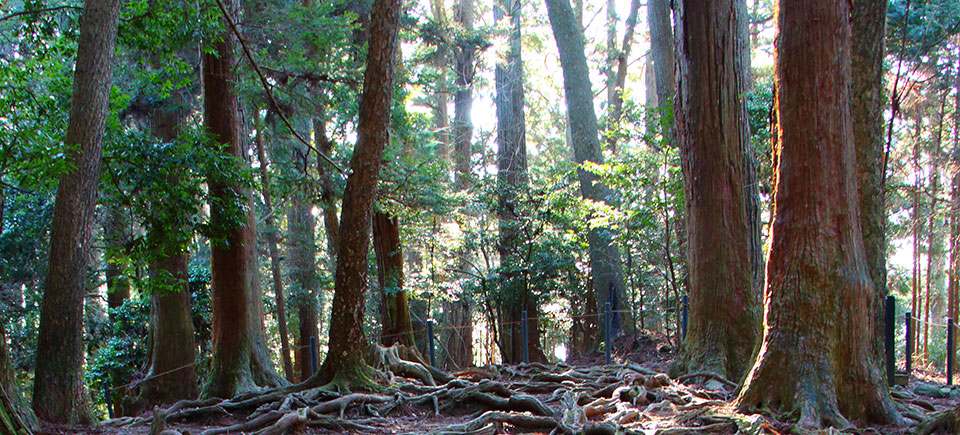Feature
The Pristine Pathways of Mount Kurama
The mountain trail connecting the tranquil Kyoto towns of Kibune and Kurama has enchanted visitors for centuries.
Offering serene natural beauty and a wealth of history and mythology, Mount Kurama has long been held by the people of Kyoto as a place of cleansing; spiritually through pilgrimages to its panoply of holy sites, and physically because of the fresh mountain air that has provided generations of visitors with respite from the stagnant heat and pollution of the city below.
The same is true for intrepid trekkers who flock here every summer to hike the 5km trail between the two picturesque villages that rest at the mountain’s feet. With popularity peaking in August, visiting in spring affords a more peaceful experience with some unique charms of its own.
The hike in each direction provides for a breathtaking experience, but at this time of year it’s recommended to set off from Kibune. The main sightseeing attraction in this quaint village is Kifune Shrine, which is said to be where goddess Tamoyori-hime no Mikoto ended her journey up the Kamogawa River from Osaka Bay some 1,600 years ago. Ascending from the shrine’s front entrance to the main courtyard, a spectacular red lantern-lined staircase stretches out, transporting all those who behold it to an earlier time.
In the courtyard be sure to purchase your omikuji, fortunes that in the maritime traditions of the shrine, reveal their message only when floated on the holy waters of the perimeter wells. Heading back down into the village will take you past a myriad of eateries that, during summer, erect platforms called kawadoko above the river Kibunegawa, on which patrons eat to the rhythm of the trickling currents underneath.
Visiting early in the year when the platforms aren’t yet in place presents the perfect opportunity to enjoy fare indoors in a traditional kisaten environment. A top pick is Toriijaya by the shrine’s main entrance, which serves kaiseki courses for around ¥3,600, and the local staple Kibune-soba (soba under a half-boiled egg with a side of grated yam) for ¥980. The food is delectable and will provide you with the energy necessary for the hike ahead.
A donation of ¥300 acquires tourists an informative pamphlet and access to the sacred trail on the east side of the river. After 20 minutes of calf-crunching ascent you’ll reach the first of many sacred sites, Oko-no-in Mao-den. Dedicated to Mao-son (otherwise known as Sanat Kumara), a deity said to have descended from Venus six million years ago, the temple stands stoically on a gray-paved plateau and provides an opportunity to rest those tired legs before heading further into the lush forest. From mid April, this is a favorite spot for hanakuyo; the ancient tradition of offering flowers to the deity in appreciation for the flora that blooms on the mountain. A short saunter along the path brings hikers to Fudo-do, a placid complex erected to honor Fudo-myoo, one of the holy guardians of esoteric Buddhism in Japan.

Shortly afterFudo-do, the path forks and confronts trekkers with a choice between neat stone steps up to the summit and a gnarled trudge through the woods. Holding feelings of fatigue in abeyance and opting to take on the more formidable terrain will pay dividends at this point, as the route leads to Osugi Gongen, an old cedar tree believed to be the incarnation of Mao-son and the location where the founder of Reiki, Usui Mikao, purportedly meditated for 21 days before being guided to his Reiki revelations.
After snaking over crooked branches, rocks and roots, the path opens into a glade where hikers are met by the drooping old cedar and its accompanying shrine. The sparsity of trees here allows the sunlight to shine in and cast celestial shadows over the place, creating a serene atmosphere that rivals that of any other part of the hike. Whether looking to follow Usui Mikao in meditation or not, it’s worth perching on a rock here and taking a few minutes to appreciate Mount Kurama at its most ethereal.
The mystique surrounding this area has been perpetuated by centuries of folklore from the mouths of local elders, and upon rejoining the main path you’ll be met with more features on which this folklore is based. Kinone-sando, literally “tree root path” is a rugged area where the cedar roots force themselves up out of the ground in an awesomely eerie display of nature’s power. At the foot of the path stands Yoshitsune sekurabe-ishi, the rock where, legend has it, samurai warrior Minamoto Yoshitsune measured his height whilst training in martial arts with a tengu (forest goblin). From here, head down from the summit past Jizo-do to arrive at the magnificent Kurama Temple.
Founded in 770 by a disciple of the Chinese monk Jianzhen, the temple is believed to be a great source of spiritual energy, supposedly offering supernatural capabilities to those who stand on the hexagram before the main hall. The vast courtyard hosts the Wesak Festival during the full moon in May and by day, boasts awe-inspiring views of the surrounding mountains. Descend the staircases of the temple’s outer complex to the lower path and pass the adjacent shrine Yuki-jinja, home of the annual Kurama Fire Festival on October 22.

After passing through Nio-mon, the “gate of the guardians”, you’ll find yourself in Kurama town and just a five-minute walk south of Kurama Onsen. Rich in hydrogen sulphide and brimming with minerals, the spring is famed for its healing properties, particularly for neuralgia and diabetes, in addition to its beneficial effects on skin. The rotenburo (outdoor bath) is only open from December 31 to March 31 and costs ¥1,000 for adults and ¥700 for kids, with towel rental for ¥400. After the hike, bathing in these waters while gazing out on the pristine mountain landscape makes for pure onsen bliss. Inspired and reinvigorated, catch the free shuttle bus from the onsen to Kurama station.
Getting There:
Starting at Kibune: Board the Eizan Dentetsu line from Demachiyanagi station and alight at Kibuneguchi station. From here take a short bus ride or 20-minute jaunt up to the main village.
Starting at Kurama: Disembark at the Eizan Dentetsu line’s final stop, Kurama.

Additional Information:
Kifune Shrine
180 Kuramakibunecho, Sakyo-ku, Kyoto, Kyoto Prefecture 601-1112
Tel: 07-5741-2016
Opening Hours: 6am–6pm, 6am–8pm (May–Nov)
Kurama-dera Temple
1074 Kuramahoncho, Sakyo-ku, Kyoto, Kyoto Prefecture 601-1111
Tel: 07-5741-2003
Opening Hours: 9am–4:30pm, 9am–5pm (Jun–Aug)
Kurama Onsen
520 Kuramahonmachi, Sakyo-ku, Kyoto, Kyoto Prefecture 601-1111
Tel: 07-5741-2131
Opening Hours: 10am–9pm (outdoor bath closes at 8pm)
Toriijaya
49 Kuramakibunecho, Sankyo-ku, Kyoto, Kyoto Prefecture 601-1112
Tel: 07-5741-2231
Opening Hours: 11:30am–6pm (open national holidays)













